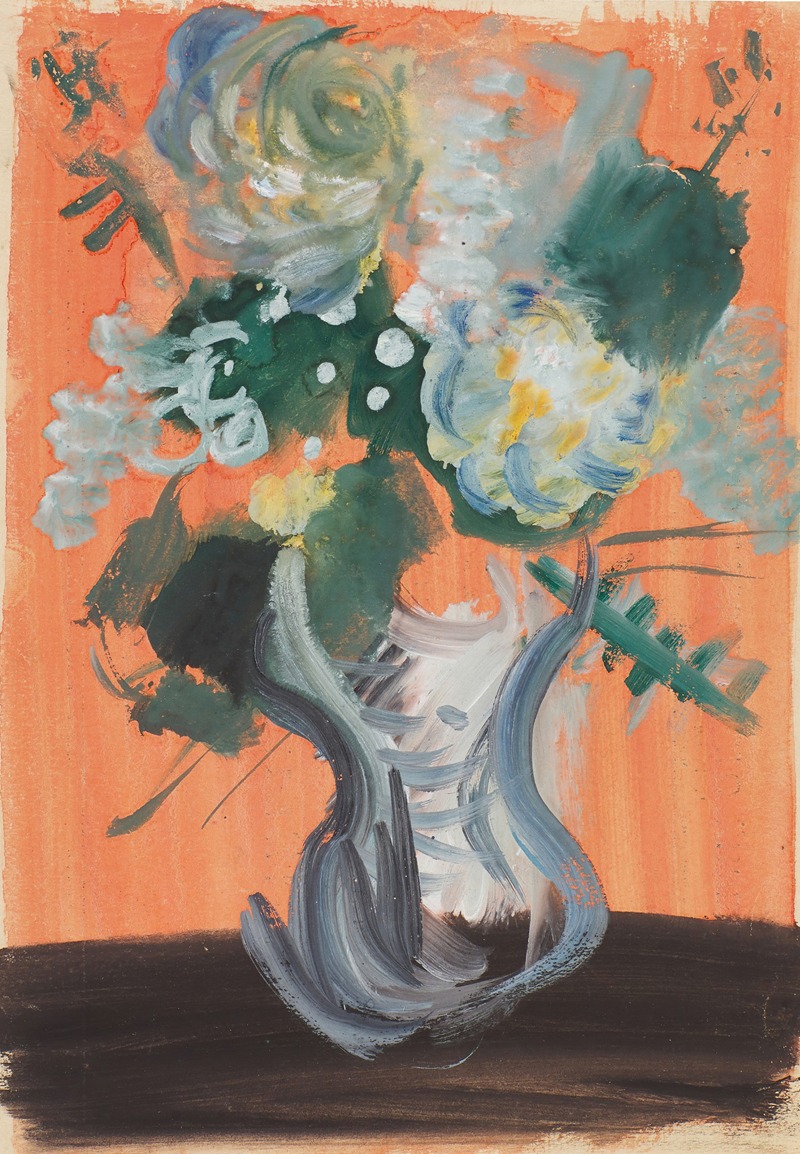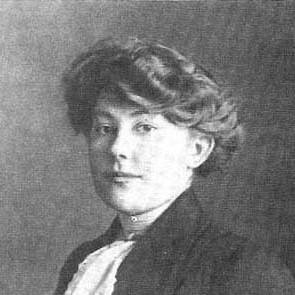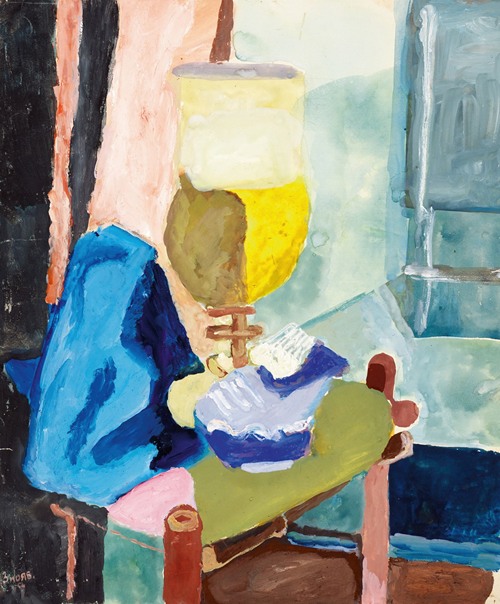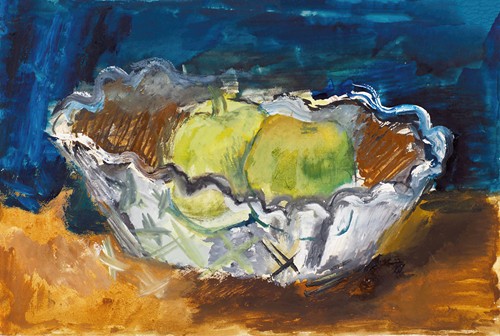

Vera Ermolaeva was a Russian painter, graphic artist and illustrator who participated in the Russian avant-garde movement.
Vera Mikhailovna Ermolaeva was born November 2, 1893, in the village of Kliuchi in the Petrovsk uyezd of the Saratov Oblast (now – the Maloserdobinsky District of the Penza Oblast). Her father, Mikahil Sergeevich Ermolaev, was a landowner and served as chairman of the zemstvo county government. Her mother, Anna Vladimirovna, was born the Baroness of Ungern-Unkovskaia.
As a child, Ermolaeva fell from a horse, an accident which crippled her legs. Her parents consulted doctors in Europe, but she was still unable to walk without the aid of crutches.
Ermolaeva was educated in Europe – first at a secular school in Paris and then at a high school in Lausanne. Her parents sent her abroad not only for study, but also to help her recover from her accident.
In 1904, the Ermolaev family returned to Russia, and in 1905, they moved back to St. Petersburg. Vera's father sold his estate, established a cooperative society called “The Labor Society,” and began to publish a liberal journal called “Zhizn’” (Life).
In 1910, Vera graduated from the Princess A. A. Obolenskaia Gymnasium.
In 1911, her father died.
In 1912, her older brother, who had become involved with revolutionary ideas and menshevism (see: "Mensheviks"), was arrested by the Tsarist government and exiled to an area near Irkutsk.
From 1911 to 1914, she studied in the studio of Mikhail D. Bernshtein and Leonid Shervud, where she became interested in cubism and futurism and was influenced by Mikhail Le-Dantyu, Ilya Zdanevich, and Mikhail Larionov. While at the studio, she designed the set for Zdanevich’s play, “Yanko 1” (1916).
In 1914, she traveled to Paris to study the painting of contemporary artists.
In 1915–16, along with Nikolai Lapshin, who would later become one of the founders of the Russian school of book illustration, she became a member of the futurist circle, “Bloodless Murder” (Beskrovnoe ubiistvo). The members of this circle published a journal by the same name.
In addition to drawing, Vera Ermolaeva was interested in history. In 1917, she graduated from the Archaeological Institute in St. Petersburg.
She was interested in religious and folk art, including icons, lubki (plural of lubok), painted signs, etc.
Around this time, she became a member of the artists’ collective “Freedom for Art” (Svoboda iskusstvu) and “Art and Revolution” (Iskusstvo and Revoliutsiya).
In 1918–19, she worked in the Petrograd City Museum. She donated her collection of painted shop signboards to the museum and published an article about them called “Peterburgskie vyveski” (Petersburg Shop Signboards) in the journal, Iskusstvo kommuny, on January 26, 1919. This article has been translated into English and published in A. Povelikhina and Ye. Kovtun, Russian Painted Shop Signs and Avant-garde Artists (Leningrad, 1991), pp. 191–2.
She lived in an apartment on Basseinaia St., where artists and poets gathered. Maksim Gorky and Vladimir Mayakovsky both visited the apartment.
She became associated with the group “Soiuz molodezhi.” Her acquaintance with Malevich become important to her artistic development.
After the revolution, Ermolaeva participated in competitions sponsored by the Visual Arts Department (IZO) of the People's Commissariat of Education (Narkompros) and experimented with working as an artist in the theater. In 1920, she created set designs for the futurist opera “Victory over the Sun” (Pobeda nad solntsem) by Mikhail Matyushin and Aleksei Kruchenykh. In 1922 these sets were exhibited in Berlin. The Museum of Modern Art (MOMA) owns an example of one of her designs for the set entitled "Design for Victory Over the Sun."
She also designed the sets for War and Peace (Voina i mir) by Vladimir Mayakovsky.
On December 25, 1934, Ermolaeva was arrested at the same time as several other artists. On March 29, 1935, she was convicted by the NKVD according to articles 58-10 and 58-11. According to materials related to the case, V. M. Ermolaeva was found guilty of “anti-Soviet activity, expressed in propaganda promoting anti-Soviet ideas and for associating herself with anti-Soviet intelligentsia.” She was sentenced to three years of incarceration. On September 20, 1937, she was found guilty a second time by a NKVD troika according to articles 58-10 and 58-11 and sentenced to death. On September 26, 1937, she was shot in a labor camp near Karaganda, Kazakhstan.
On September 20, 1989, she was posthumously rehabilitated.



